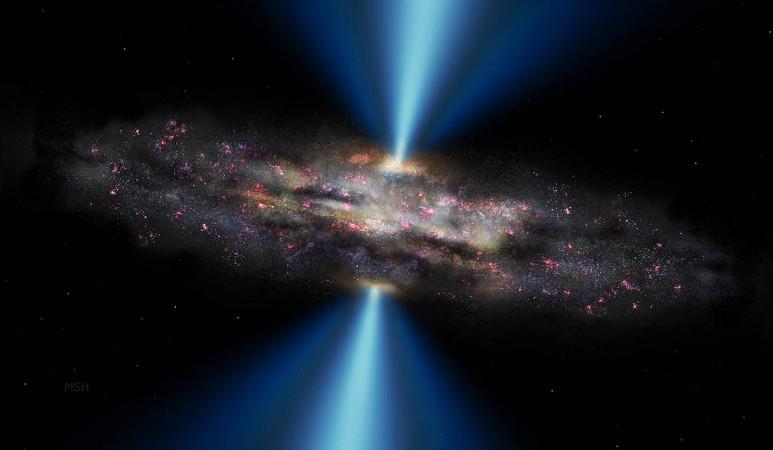
Black holes are possibly the most mysterious regions in spacetime, no denying there. While several have been detected and studied extensively, humans are yet to even see or observe one directly. A new theory on black holes have physicists speculating how dark matter interacts with black holes.
The idea is that black holes collect dark matter and then use it to spew black hole lasers and radiation out into space. Dark matter is another mysterious cosmic material that scientists say makes up most of the matter in the universe. Estimates indicate they make up around 80% of all matter in the universe.
Dark matter, however, does not interact with normal matter, so humans have yet to detect it. Instead, dark matter interacts with gravity, and black holes are points in the universe where it is possible that gravity is infinite.
So this new theory is more than just a fantastical thought experiment. "I think it's a fascinating possibility," said Thomas Kephart, from the Vanderbilt University, who is one of the authors of the new paper that was published in the journal Physical Review Letters, reports Gizmodo.
According to astronomers, it is possible that if black holes rotate, they are likely to accumulate clouds of axions through a process called superradiance. The number of axions - hypothetical subatomic particles - that can be caught like this, says the report is around 10 to the power 80, that is 10 followed by 80 zeros.
Coincidentally, that number is about the same as the total number of elementary particles, or atoms in the whole universe, according to Carl Sagan.
In the paper, researchers speak of dark matter being something that makes even whole galaxies behave a lot more massively than they look. This could be because there is no way to actually look at it. Black matter is theorised to be made of fundamental particles called axions and they only ever communicate with the rest of the universe's matter through gravity.
When clouds of axions gather around a black hole, it could look like a massive atom with a centre made up of a black hole instead of a nucleus. And in place of electrons, it would be surrounded by an axion cloud.
From the cloud of axion, it is possible that it could decay every single axion into a pair of photons —light particles — this would, they say, excite nearby axions and even cause them to decay into photons and set off a chain reaction. The reaction, however, is not stable and will stop, says the report. It will again be restarted and stopped almost constantly. What this does is result in short bursts of radiation called BLASTs.
In essence, the study hypothesises that the fast radio bursts that are often written about coming from black holes might actually be lasers caused by the degradation of black matter in black holes. Having said that, there is no actual evidence that axions even exist, notes the report.

















